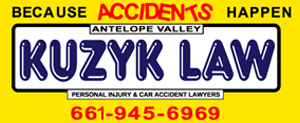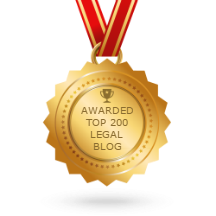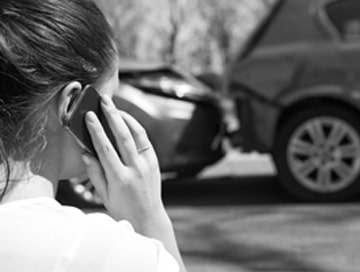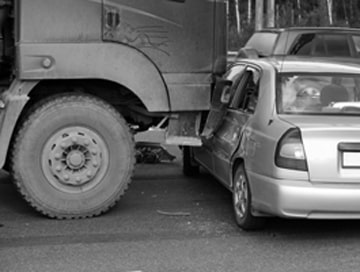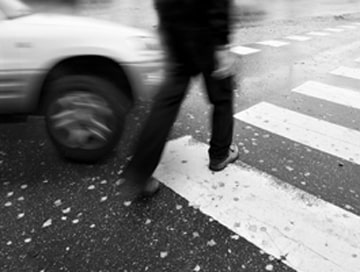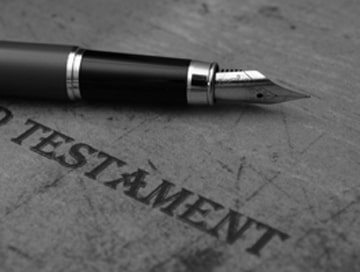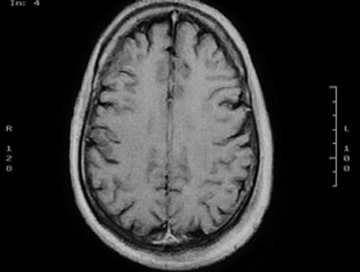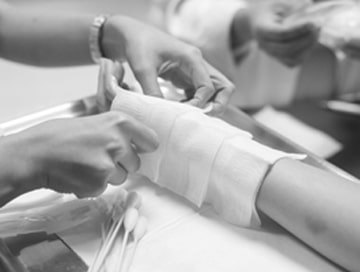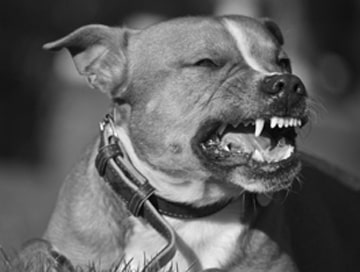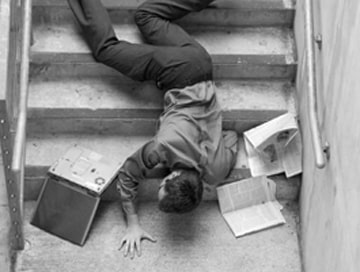When a self-driving car causes an accident in Lancaster, liability typically falls on the human driver who must remain alert and ready to take control, but responsibility can also extend to the vehicle manufacturer if a software defect or hardware failure contributed to the crash.
California law treats most “autonomous” vehicles as driver-assist systems that still require human supervision, meaning the person behind the wheel bears primary legal responsibility for safe operation and must avoid distracted driving behaviors.
However, suppose the accident resulted from a malfunctioning sensor, faulty software, or a design defect. In that case, you may have grounds for a product liability claim against companies like Tesla, Waymo, or other manufacturers.
You need to understand how California’s comparative negligence laws apply when both human error and technological failures contribute to an accident. The digital evidence from these vehicles can be crucial for proving your case, but this data often disappears quickly if you don’t act fast to preserve it.
This article explains who can be held liable in Lancaster self-driving car accidents, how to preserve critical evidence, what insurance coverage applies, and when you need an experienced Lancaster car accident attorney to protect your rights.
What Does California Consider a Self-Driving Car?
Liability in a self-driving car accident can involve the human driver, the vehicle manufacturer, software developers, or other motorists. This depends on what went wrong and who was responsible for preventing the crash.
California law permits self-driving cars on the road, but most still require a human to monitor and take control when necessary.
A self-driving car is any vehicle that can control steering, braking, or acceleration without constant human input. This means the car uses computers and sensors to make driving decisions. However, most ‘self-driving’ cars you see in Lancaster are actually driver-assist vehicles that still need human supervision.
California recognizes six levels of automation from Level 0 to Level 5. Level 0 means no automation at all, while Level 5 means the car drives itself completely without any human help. Most vehicles on Lancaster roads today operate at Level 2 or 3, which are considered driver-assist systems.
These levels matter because they determine who is responsible when something goes wrong:
Who Is Liable When a Self-Driving Car Crashes in Lancaster?
California uses pure comparative negligence, which means fault can be split between multiple parties. In a self-driving car crash, blame may be attributed to the human operator, the car company, the software maker, or other drivers.
The key is determining whether human error, computer problems, or defective parts were the cause of the accident.
Lancaster’s busy roads, such as Highway 14 and Sierra Highway, create unique challenges for both human drivers and self-driving systems.
When accidents happen, our lawyers investigate every possible cause to make sure you get compensation from all responsible parties.
Human Driver Or Operator
California Vehicle Code Section 38750 states that the person in the driver’s seat is legally considered the operator.
This means they must be ready to take control of the car at any moment. If the operator was texting, sleeping, or not paying attention when they should have prevented a crash, they can be held liable.
Even when a car is in ‘self-driving’ mode, the human still has the primary responsibility. You can’t just turn on autopilot and take a nap or watch a movie.
The law requires you to monitor the road and be prepared to act if the computer makes an error.
Manufacturer And Software Developer
Sometimes the technology itself is to blame for an accident. Product liability claims can arise when design flaws, manufacturing defects, or software bugs cause crashes.
Companies like Tesla, Waymo, or GM Cruise may face liability if their systems fail to function as promised, particularly in cases involving Tesla accidents that involve Autopilot malfunctions.
Common technology failures that lead to liability include:
Sensor malfunctions:
Cameras or radar that don’t detect obstacles
Software errors:
Programs that misread traffic signals or road signs
Update problems:
New software that creates bugs or removes safety features
Design flaws:
Systems that can’t handle everyday driving situations
Evidence such as vehicle recalls, technical bulletins, or software patch notes can demonstrate that a defect existed before your accident.
Fleet Operator, Maintenance, And Other Parties
When crashes involve robotaxis or company-owned self-driving vehicles, such as those in Uber accident cases with autonomous features, the business that operates the fleet may be liable.
This happens when accidents result from poor maintenance, failed safety inspections, or inadequate training for human safety drivers.
Other parties might also share responsibility depending on the circumstances. Government entities can be liable for dangerous road conditions, construction companies for inadequate warning signs, or repair shops for faulty work on the vehicle’s computer systems.
How Do You Prove Fault in an Autonomous Vehicle Crash?
Proving fault in a self-driving car accident requires different evidence than a regular car crash. The digital data recorded by the vehicle is often the most crucial evidence, but this information can disappear quickly if you don’t act promptly.
Our Lancaster self-driving car accident attorneys understand how to preserve this electronic evidence and utilize it to determine whether the technology or the human driver was at fault.
Self-driving cars are basically computers on wheels, and they keep detailed records of everything they do. This data can tell us precisely what the car ‘saw,’ how it reacted, and whether it made the right decisions. However, this information often gets overwritten or deleted within days or weeks of an accident.
Digital Data To Secure
The most crucial evidence in an autonomous vehicle crash comes from the car’s computer systems. Modern self-driving cars record massive amounts of data that can prove exactly what happened before, during, and after a collision.
Critical digital evidence includes:
Event Data Recorder (EDR):
Records speed, braking, steering, and airbag deployment in the seconds before impact
Camera and sensor logs:
Show what the vehicle’s cameras and radar detected
Software version history:
Reveals if the car was running outdated or buggy software
GPS and route data:
Confirms the vehicle’s exact location and path
This data often exists in multiple places. Some information stays on the car’s hard drive, while other data might be uploaded to the manufacturer’s servers. You need an experienced Lancaster self-driving car accident lawyer who knows how to request this information from all possible sources before it’s lost forever.
Physical Evidence And Experts
Traditional accident evidence remains essential even in self-driving car cases. Photos of the crash scene, police reports, and witness statements all contribute to building your case. Traffic cameras at major Lancaster intersections can provide an independent view of what happened.
Self-driving car cases also require specialized experts who possess a deep understanding of the technology. These professionals can interpret the complex data and explain it to insurance companies, judges, and juries.
What Insurance Covers a Self-Driving Car Accident?
Insurance coverage for self-driving car accidents can be confusing because it depends on who owned the vehicle and what type of automation was involved. The good news is that someone’s insurance should cover your damages; however, determining which policy applies requires some investigation.
Most people assume their regular car insurance covers self-driving vehicles, but that’s not always the case. Commercial self-driving services have different insurance requirements, and manufacturer liability adds another layer of complexity to the issue.
Private Vehicle With Driver-Assist
If you’re involved in an accident with a privately owned car equipped with driver-assist features, the owner’s personal auto insurance policy usually applies first. The driver’s liability coverage pays for injuries they cause to others, while their collision coverage handles damage to their own vehicle.
Your own insurance also plays a role in these cases:
- Uninsured/underinsured motorist coverage: Protects you in an uninsured motorist accident when the at-fault driver lacks adequate coverage
- Medical payments coverage: Pays your medical bills regardless of who was at fault
- Collision coverage: Repairs your vehicle even if the other driver was uninsured
Product liability claims against the manufacturer run separately from auto insurance. If a defect in the car’s technology contributed to your accident, you can recover additional compensation directly from the company that made the faulty system.
Robotaxi Or Company AV
Commercial self-driving services, such as robotaxis, must carry significantly higher insurance limits than regular drivers. These companies typically have millions of dollars in coverage to protect passengers and other road users. However, determining which insurance applies can get complicated when multiple parties are involved.
The insurance landscape for commercial autonomous vehicles includes coverage from the fleet operator, any human safety drivers, and potentially the vehicle manufacturer. Our lawyers know how to identify all available insurance sources and make sure you receive full compensation for your injuries.
What Deadlines And Comparative Negligence Rules Apply In California?
The state’s pure comparative negligence system is actually good news for accident victims. It means you can still recover money even if you were partially at fault for the crash. However, you must file your claim within strict time limits or lose your right to compensation entirely.
Comparative Negligence In California
California’s comparative negligence rule means your compensation gets reduced by your percentage of fault, but you can still recover damages even if you were mostly to blame. For example, if you suffered $100,000 in damages but were 20% at fault, you would receive $80,000.
The objective data from self-driving cars can be beneficial in comparative negligence cases. Instead of relying on conflicting witness statements, we can often use the vehicle’s sensors and cameras to show exactly what each party did wrong.
This technology frequently helps our clients by providing clear evidence that minimizes their share of the blame.
Time Limits And Government Claims
California law establishes strict deadlines for filing various types of claims following an accident. Missing these deadlines usually means you lose your right to compensation completely, even if you have a strong case.
Government claims have the shortest deadline and the most complex requirements. If poor road conditions, broken traffic signals, or inadequate signage contributed to your accident, especially in cases involving wrongful death, you must file a formal claim with the government entity within six months.
What Are Your Next Steps After a Self-Driving Car Crash?
The actions you take immediately after a self-driving car accident can make or break your case. You need to protect your health while also preserving evidence that might disappear within hours or days. Following the right steps helps ensure you get proper medical care and the best possible outcome for your legal claim.
Many people are unaware of how quickly crucial evidence can disappear after an autonomous vehicle accident.
The car’s computer systems may overwrite data, businesses may delete security footage, and witnesses may forget important details. Acting fast is essential.
Medical Care And Reporting
Your health comes first, even if you feel fine after the accident. Some serious injuries don’t cause immediate pain or noticeable symptoms, but they can lead to long-term problems if not treated promptly.
Take these steps to protect your health and document your injuries:
- Get medical attention right away, even for minor injuries
- Tell the doctor that a self-driving or driver-assist vehicle was involved
- Follow all treatment recommendations from your healthcare providers
- Keep detailed records of all medical appointments and expenses
- Document how your injuries affect your daily activities and work
When reporting the accident to the police, ensure that they note the involvement of autonomous or driver-assist technology. This information helps investigators understand what evidence they need to preserve and can be crucial for your insurance claim.
Preserve Evidence Now
Evidence in self-driving car cases tends to disappear much faster than in regular accidents. The vehicle’s data storage systems often overwrite information within days or weeks, and you might lose crucial proof if you don’t act immediately.
Critical evidence preservation steps include:
Document everything:
Take photos and videos of all vehicles, the accident scene, and any error messages or warnings on the car’s display screen
Send preservation letters:
Have a lawyer immediately demand that all parties preserve data, video footage, and other evidence.
Request surveillance footage:
Ask nearby businesses for security camera footage before their systems automatically delete it.
Preserve your own evidence:
Don’t repair your vehicle or throw away damaged personal items until your lawyer says it’s okay.
The sooner you contact an attorney, the better chance we have of preserving all the evidence needed to prove your case.
When To Call A Lancaster AV Lawyer
Some self-driving car accidents are straightforward, but many involve complex technology and multiple potentially liable parties. You should definitely consult with an attorney if your situation involves any of these factors:
- Serious injuries: Any accident requiring hospitalization or ongoing medical treatment
- Disputed fault: When there’s disagreement about who was responsible or how the technology performed
- Insurance complications: If insurance companies are asking detailed questions about the autonomous system
- Commercial vehicles: Any accident involving a robotaxi, delivery vehicle, or other commercial autonomous vehicle
- Multiple parties: When several people or companies might share responsibility for the crash
At Kuzyk Personal Injury & Car Accident Lawyers, we offer free consultations and work on a contingency fee basis. This means you don’t pay attorney fees unless we win your case.
Common Self-Driving Car Accident Injuries
Self-driving car accidents can cause the same types of injuries as regular car crashes, but some patterns are unique to autonomous vehicle technology. Understanding these injury types helps you recognize when you need immediate medical attention and plan for long-term care.
Whiplash And Neck Injuries
Neck injuries are common in self-driving car accidents, particularly when the autonomous system makes sudden stops or changes direction without warning. Whiplash occurs when your head snaps forward and backward rapidly, causing damage to the soft tissues in your neck.
These injuries can be particularly severe if the human driver wasn’t prepared for the impact because they were relying on the autonomous system. Symptoms may not appear immediately, so it’s essential to see a doctor, even if you feel fine after the accident.
Head And Brain Injuries
Traumatic brain injuries can occur in any car accident, but they’re especially concerning in autonomous vehicle crashes. If the self-driving system malfunctioned, the human driver might not have had time to brace for impact or position themselves safely.
Even mild concussions can have long-lasting effects on your ability to work, concentrate, and enjoy daily activities. Brain injuries often require extensive medical treatment and rehabilitation, making it crucial to document all symptoms and follow your doctor’s recommendations.
Back And Spinal Injuries
The sudden forces involved in car accidents can damage your spine in multiple ways. Herniated discs, compressed nerves, and fractured vertebrae are all possible in self-driving car crashes. These injuries can cause chronic pain and may require surgery or long-term physical therapy.
Spinal injuries are severe because they can affect your ability to work and perform daily activities for months or years. Proper documentation and expert medical testimony are crucial for obtaining full compensation for these life-altering injuries.
Contact Kuzyk Personal Injury & Car Accident Lawyers Today
If you’ve been injured in a self-driving car accident in Lancaster, you need experienced attorneys who understand both traditional personal injury law and the cutting-edge technology of autonomous vehicles. At Kuzyk Personal Injury & Car Accident Lawyers, we have the knowledge and resources to take on major technology companies and secure the compensation you deserve.
We know how to quickly preserve the digital evidence that can make or break autonomous vehicle cases. Our team works with leading experts in automotive technology, software engineering, and accident reconstruction to build the strongest possible case for our clients.
Don’t let crucial evidence disappear while you’re dealing with injuries and insurance companies. Contact us today to schedule a complimentary consultation and discuss your case. We work on a contingency fee basis, which means you don’t pay attorney fees unless we win your case.
Time is critical in self-driving car accident cases because evidence can be lost forever within days or weeks. Call us now to protect your rights and start building your case for maximum compensation.
